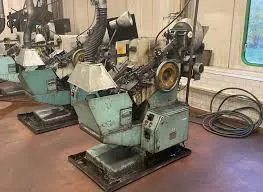
-
 Afrikaans
Afrikaans -
 Albanian
Albanian -
 Amharic
Amharic -
 Arabic
Arabic -
 Armenian
Armenian -
 Azerbaijani
Azerbaijani -
 Basque
Basque -
 Belarusian
Belarusian -
 Bengali
Bengali -
 Bosnian
Bosnian -
 Bulgarian
Bulgarian -
 Catalan
Catalan -
 Cebuano
Cebuano -
 Corsican
Corsican -
 Croatian
Croatian -
 Czech
Czech -
 Danish
Danish -
 Dutch
Dutch -
 English
English -
 Esperanto
Esperanto -
 Estonian
Estonian -
 Finnish
Finnish -
 French
French -
 Frisian
Frisian -
 Galician
Galician -
 Georgian
Georgian -
 German
German -
 Greek
Greek -
 Gujarati
Gujarati -
 Haitian Creole
Haitian Creole -
 hausa
hausa -
 hawaiian
hawaiian -
 Hebrew
Hebrew -
 Hindi
Hindi -
 Miao
Miao -
 Hungarian
Hungarian -
 Icelandic
Icelandic -
 igbo
igbo -
 Indonesian
Indonesian -
 irish
irish -
 Italian
Italian -
 Japanese
Japanese -
 Javanese
Javanese -
 Kannada
Kannada -
 kazakh
kazakh -
 Khmer
Khmer -
 Rwandese
Rwandese -
 Korean
Korean -
 Kurdish
Kurdish -
 Kyrgyz
Kyrgyz -
 Lao
Lao -
 Latin
Latin -
 Latvian
Latvian -
 Lithuanian
Lithuanian -
 Luxembourgish
Luxembourgish -
 Macedonian
Macedonian -
 Malgashi
Malgashi -
 Malay
Malay -
 Malayalam
Malayalam -
 Maltese
Maltese -
 Maori
Maori -
 Marathi
Marathi -
 Mongolian
Mongolian -
 Myanmar
Myanmar -
 Nepali
Nepali -
 Norwegian
Norwegian -
 Norwegian
Norwegian -
 Occitan
Occitan -
 Pashto
Pashto -
 Persian
Persian -
 Polish
Polish -
 Portuguese
Portuguese -
 Punjabi
Punjabi -
 Romanian
Romanian -
 Russian
Russian -
 Samoan
Samoan -
 Scottish Gaelic
Scottish Gaelic -
 Serbian
Serbian -
 Sesotho
Sesotho -
 Shona
Shona -
 Sindhi
Sindhi -
 Sinhala
Sinhala -
 Slovak
Slovak -
 Slovenian
Slovenian -
 Somali
Somali -
 Spanish
Spanish -
 Sundanese
Sundanese -
 Swahili
Swahili -
 Swedish
Swedish -
 Tagalog
Tagalog -
 Tajik
Tajik -
 Tamil
Tamil -
 Tatar
Tatar -
 Telugu
Telugu -
 Thai
Thai -
 Turkish
Turkish -
 Turkmen
Turkmen -
 Ukrainian
Ukrainian -
 Urdu
Urdu -
 Uighur
Uighur -
 Uzbek
Uzbek -
 Vietnamese
Vietnamese -
 Welsh
Welsh -
 Bantu
Bantu -
 Yiddish
Yiddish -
 Yoruba
Yoruba -
 Zulu
Zulu
Comprehensive Price List for Thread Rolling Tools and Equipment
Understanding Thread Rolling Tool Pricelist
Thread rolling is a manufacturing process that transforms a cylindrical blank into a threaded part through a series of mechanical operations that displace material rather than removing it. This method not only enhances the strength of the threads but also optimizes material usage, making it an increasingly popular choice in modern manufacturing. As the demand for thread rolling grows, so does the need for efficient and cost-effective tooling solutions. Understanding the pricelist of thread rolling tools is crucial for manufacturers looking to maintain a competitive edge.
Understanding Thread Rolling Tool Pricelist
One critical factor influencing tool prices is material quality. High-speed steel (HSS) and carbide are common materials used in the manufacturing of thread rolling tools. While HSS tools are generally more affordable, carbide tools offer superior durability and longevity, justifying their higher price point. For manufacturers that require high volumes and frequent tool changes, investing in carbide tools can yield significant cost savings in the long run.
thread rolling tool pricelist

Another consideration impacting the pricelist is the manufacturing technique used to produce the tools. Advanced manufacturing methods, such as CNC machining and precision grinding, can increase the cost of thread rolling tools. However, these methods can provide better accuracy and performance, leading to less material waste and higher-quality finished products.
Moreover, the complexity of the thread profile also plays a crucial role in pricing. Standard threads may incur lower costs due to their widespread use and simple design, while custom or intricate thread profiles often require specialized tools, which can drive up production costs. Manufacturers are encouraged to weigh the benefits of precision against the initial investment when assessing their tooling needs.
It's also important to consider the impact of ongoing maintenance and potential tool reconditioning on overall costs. While high-quality tools may require a larger upfront investment, their durability may offset the need for frequent replacements, ultimately leading to lower total costs in production.
In conclusion, a thorough understanding of the thread rolling tool pricelist is essential for manufacturers aiming to optimize their production processes while managing costs. By considering factors such as material quality, manufacturing techniques, thread complexity, and ongoing maintenance, businesses can make informed decisions that align with their operational needs and budget constraints. As technology advances and the market evolves, staying updated on pricing trends will remain vital for maintaining a competitive edge in thread rolling manufacturing.
